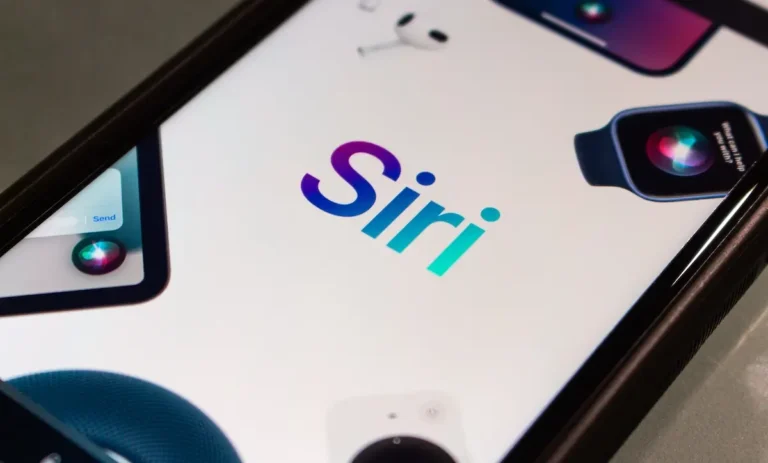The Future of Urban Planning: Technology’s Role in Visual Communication
Cities That Think Before They Build
Walk through any major city today and you’ll witness a silent revolution. Behind every new development, traffic flow improvement, or public space renovation, sophisticated visualization technologies are reshaping how we imagine, design, and build our urban futures. The days of static blueprints and foam-core models gathering dust in planning offices are fading into history. Welcome to the age where cities come alive before the first brick is laid.
The transformation is staggering. The AI-powered urban planning market alone is rocketing from $20.576 billion in 2024 to an anticipated $51.450 billion by 2029 – a growth rate that would make Silicon Valley startups envious. Meanwhile, smart city investments are projected to reach $115.30 billion by the same year. These aren’t just numbers; they’re indicators of a fundamental shift in how humanity approaches its most complex creation: the city itself.
Jan Gehl, the legendary Danish architect and urban visionary, captured the essence of this relationship perfectly: “First we shape the cities – then they shape us.” Today’s architectural renderings aren’t just pretty pictures – they’re sophisticated simulations that help us understand how our shaped cities will, in turn, shape generations to come. They’re crystal balls showing us not just buildings, but the lives that will unfold within and around them.
The Death of Guesswork
Imagine trying to explain the impact of a new transit hub to a community using only words and flat drawings. Now imagine showing them a photorealistic simulation where they can watch virtual commuters navigate the space, see how shadows fall across the plaza at different times of day, witness traffic patterns optimize in real-time. Which approach wins hearts and minds?
Visual communication technologies have murdered ambiguity. Geographic Information Systems (GIS) now layer decades of data onto interactive maps that reveal patterns invisible to the naked eye. Heat maps show foot traffic concentrations. Color-coded overlays display income disparities, pollution levels, flood risks. Every pixel tells a story, every zoom level reveals new truths about how cities actually work versus how we think they work.
The democratization of understanding has been revolutionary. No longer do citizens need degrees in urban planning to grasp complex proposals. A grandmother can understand traffic impact as easily as a transportation engineer. A teenager can visualize how a new park will transform their neighborhood. Visual communication has become the universal language of urban transformation.
Where Data Becomes Destiny
Cities generate data like stars generate light – constantly, massively, overwhelmingly. Smart cities are expected to increase their data usage by 140% between 2023 and 2027. But raw data is meaningless without interpretation, and that’s where visualization technologies shine brightest.
Real-time dashboards transform incomprehensible data streams into actionable intelligence. Traffic managers watch congestion patterns evolve like weather systems. Emergency responders see crime hotspots pulse and fade. Energy managers observe consumption ripple through districts like waves. These aren’t just displays; they’re decision-making engines that turn information overload into urban optimization.
But here’s what’s truly revolutionary: predictive visualization. AI systems now create visual scenarios of possible futures based on current trends. What happens if we add a bike lane here? How will this affect traffic five blocks away? Ten years from now? These tools don’t just show what is – they reveal what could be, should be, might be. They turn planning from reactive to proactive, from guesswork to science.
Breaking Down the Ivory Tower
Traditional urban planning suffered from a communication crisis. Planners spoke in zoning codes and density ratios. Citizens spoke in daily frustrations and neighborhood dreams. Visual communication technologies have become the interpreter, translating professional jargon into human understanding.
Interactive 3D models let citizens virtually walk through proposed developments. Augmented reality apps overlay future buildings onto current streetscapes through smartphone cameras. Virtual reality experiences immerse stakeholders in tomorrow’s city today. These aren’t gimmicks – they’re empathy machines that help planners understand how their decisions feel at street level.
Community engagement has transformed from contentious town halls to collaborative design sessions. Citizens don’t just comment on plans; they help create them. Digital twins of neighborhoods become sandboxes where residents can test ideas, suggest improvements, visualize alternatives. The planner’s monopoly on imagination has ended. Everyone’s a city designer now.
The Human Scale in Digital Space
Technology hasn’t eliminated the human element in urban planning – it’s amplified it. Jan Gehl also noted that “A good city is like a good party – people stay longer than really necessary because they are enjoying themselves.” Modern visualization tools help planners understand what makes cities “sticky” – why people linger in some spaces and hurry through others.
Eye-tracking studies overlaid on urban designs reveal what catches attention. Mood mapping visualizations show emotional responses to different environments. Pedestrian flow simulations demonstrate how tiny design changes – a bench here, a tree there – dramatically alter human behavior. The city becomes a living organism whose vital signs we can finally read.
This human-centric approach extends to accessibility planning. Visualization tools simulate experiences of elderly residents, parents with strollers, wheelchair users. They reveal invisible barriers and hidden challenges. A beautiful plaza that looks perfect from above might be revealed as an obstacle course at ground level. Technology makes empathy measurable, inclusion visible.
Climate Change Meets Visual Reality
With 68% of the global population expected to live in cities by 2050, urban areas are ground zero for climate adaptation. Visual communication technologies have become essential weapons in this existential battle. They transform abstract climate data into visceral experiences that drive action.
Sea level rise visualizations show future shorelines creeping inland. Heat island mapping reveals which neighborhoods will become uninhabitable without intervention. Storm surge simulations demonstrate exactly which buildings need flood protection. These aren’t hypothetical exercises – they’re survival guides for cities facing unprecedented environmental challenges.
Green infrastructure planning has been revolutionized. Planners can visualize how urban forests will grow over decades, how green roofs will affect building temperatures, how bioswales will manage stormwater. They can show skeptics exactly how many degrees cooler a tree-lined street becomes, how much carbon a park sequesters, how green infrastructure pays for itself through avoided damages.
The Economic Argument Made Visual
Money talks, but pictures sell. Visual communication tools have become indispensable for making economic cases for urban investments. Return on investment isn’t just a number anymore – it’s a compelling visual story showing transformation over time.
Property value heat maps demonstrate how transit investments ripple through neighborhoods. Economic impact visualizations show how a new stadium or convention center affects surrounding businesses. Cost-benefit analyses become animated narratives showing dollars flowing through communities, jobs created, taxes generated. Abstract economics becomes concrete reality.
Public-private partnerships particularly benefit from these tools. Investors can see exactly what they’re buying into. Risk assessments become visual scenarios rather than probability tables. Development phasing plays out like a time-lapse movie. The entire lifecycle of an investment unfolds in minutes rather than buried in hundreds of pages of reports.
The Dark Side of Perfect Pictures
With great visualization power comes great responsibility. Photorealistic renderings can sell dreams that reality can’t deliver. Communities have been burned by beautiful visions that turned into concrete disappointments. The gap between rendered paradise and built reality has bred cynicism.
There’s also the digital divide to consider. While visualization technologies democratize understanding, they require digital access and literacy. Communities already marginalized risk being further excluded from planning processes that increasingly happen in virtual spaces. The very tools meant to increase participation might create new barriers.
Privacy concerns loom large. The data that makes visualizations powerful – movement patterns, behavioral analytics, demographic details – raises questions about surveillance and consent. Cities must balance transparency with privacy, insight with intrusion.
Tomorrow’s Visual Vocabulary
The future promises even more radical transformations. Holographic projections will let planners manipulate 3D city models with their hands. Brain-computer interfaces might let us navigate virtual cities with thought alone. Quantum computing will enable simulations of unprecedented complexity and accuracy.
Artificial intelligence is already generating design options faster than humans can evaluate them. Machine learning algorithms identify patterns in successful urban spaces and suggest improvements to struggling areas. The role of human planners is evolving from creators to curators, from designers to directors of algorithmic creativity.
Yet amidst all this technological wizardry, the fundamental challenge remains unchanged: creating cities where humans flourish. Visual communication technologies are tools, not solutions. They help us see possibilities, understand impacts, imagine alternatives. But the vision itself – the dream of better cities, more equitable communities, sustainable futures – that still requires human imagination, compassion, and courage.
The cities we build tomorrow are being visualized today. In planning offices around the world, the future flickers on screens, morphs in models, lives in simulations. These aren’t just technical exercises – they’re acts of collective imagination that will determine how billions of people live, work, play, and dream. The pixels we push today become the places we inhabit tomorrow.
Also READ-How Tech Empowers Travelers to Explore Without Limits





